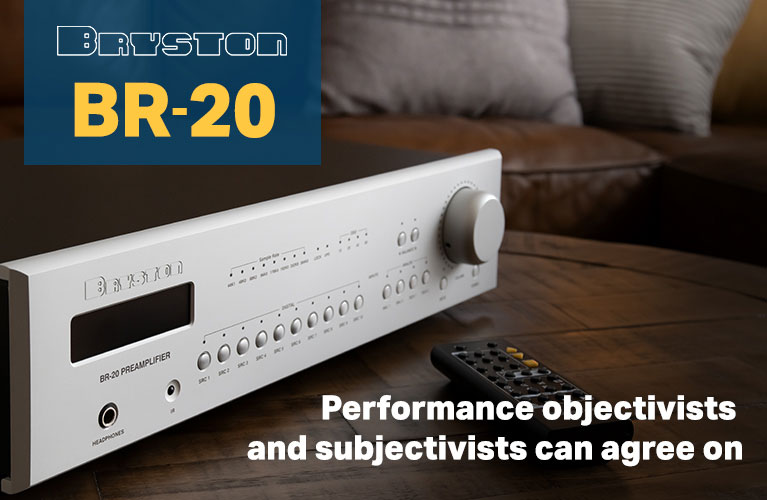 Those who noticed a teaser a couple of columns ago that the speakers would be discussed the following month will have to wait until October 1, as I am holding them back as a surprise. Since we have so far discussed the power amplifier and phono stage (with output-level control, to serve as a preamp for the time being), I figured it was a perfect time to deal with the source, especially since some remaining hardcore flat earthers—hi-fi’s version of the Taliban—consider the front-end to be the most important element of all, the rest of the system be damned.
Those who noticed a teaser a couple of columns ago that the speakers would be discussed the following month will have to wait until October 1, as I am holding them back as a surprise. Since we have so far discussed the power amplifier and phono stage (with output-level control, to serve as a preamp for the time being), I figured it was a perfect time to deal with the source, especially since some remaining hardcore flat earthers—hi-fi’s version of the Taliban—consider the front-end to be the most important element of all, the rest of the system be damned.
Up to a point, you can’t challenge the “garbage in, garbage out” credo. But imagine that, unless you’re loaded enough to start with a system which has no compromises, rather than a real-world solution limited by budget, the sound will be held back by the rest of the audio chain, however high-end the record deck. I’ve always maintained that a more sensible approach would be in favour of balance, bearing in mind that a basic tenet of this series is to ensure that upgrading will be painless and easy to achieve, without having to dump any part of the system for fear that it’s holding you back.
It is fundamentally true that, with analogue sources, you cannot improve on the output of the phono stage. Digital is different because the data coming from a transport or a CD player’s digital output can be manipulated by the best DACs, which have never ceased to improve. With analogue playback (and there are LP evangelists out there who still think it’s better than open-reel tape . . .), there is an inescapable downside, which the early proselytisers of the “expensive turntable with crap amp and speakers” camp refused to contemplate.
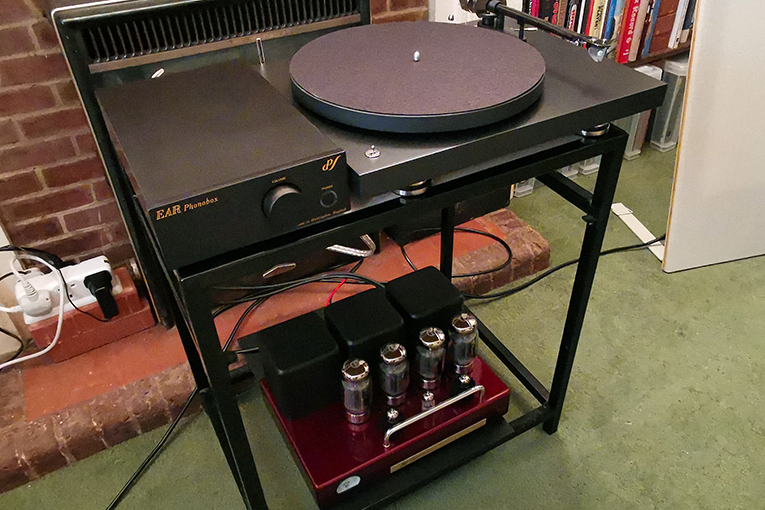
Let me offer you an extreme example so we can get to the chosen front-end. Let’s say you have $1500 for a system, a quarter of the allowance in this series. I would spend $500 each on a turntable package, integrated amp, and speakers. Flat earthers would tell you to drop $1200 on the record deck package and $150 each on the amp and speakers. I’m sorry, but there is no effing way on God’s good earth that such a system will prove more satisfying than one of reasonable balance because, whatever the source, you’re still hearing it through a pair of $150 speakers and a $150 amp.
At that price level, doubling the expenditure on each results in a massive upgrade. Just look at what $500 will get you for speakers, as opposed to $150. But here is where I contradict myself, because this system is biased toward the Bob Carver Crimson 275 amplifier, which swallowed nearly half the budget. However, each component in this system is something of a freak which defies its price tag, so percentage-of-budget arguments become moot; just have a play with the EAR Yoshino Phonobox I discussed last month and you’ll hear what I mean.
Again, to reiterate, and to silence readers who tell me “analogue sucks” and “tubes suck,” this is an LP-playing all-tube system. It’s not a political statement; it’s just a matter of preference. If you think I’m off my rocker, so be it. But I do use CD, SACD, solid-state amps, and other technologies—just not here.
Because of my insistence on sticking with the Crimson 275, I had to adjust everything else price-wise, being saved first by the Phonobox because it’s a phono stage with output-level control, thus obviating (for the present) the need for a preamplifier. The speakers, too, are shockingly underpriced, so I find myself with less than $1000 for turntable, arm, and cartridge.
As has always been the case, manufacturers like to sell complete packages; the need or capability to choose and fit your preferred separate arm and cartridge starts at higher price points. I have no qualms about complete deck/arm/cartridge packages, which the companies assemble with care, especially as nearly all allow—at the very least—the potential to change cartridges somewhere down the line. Moreover, I am overjoyed with the trend of fitting phono sockets at the back instead of captive cables, so tweaking the wires is a no-brainer.
Before you bombard me with your preferences—and as I have said before, if you do, you are missing the point because this is about an accidental system, not my attempt at creating a list of default purchases—I am aware of phenomenal turntables from VPI, Clearaudio, EAT, Thorens, Rega, and countless others which are ideal candidates for a $6000 package. But a deck arrived this summer which has blown me away. Ironically, though, what you get in the United States, and what I reviewed in Hi-Fi News & Record Review, on which I based this, are fitted with different cartridges. But first, the package as it comes vis-à-vis deck and tonearm.
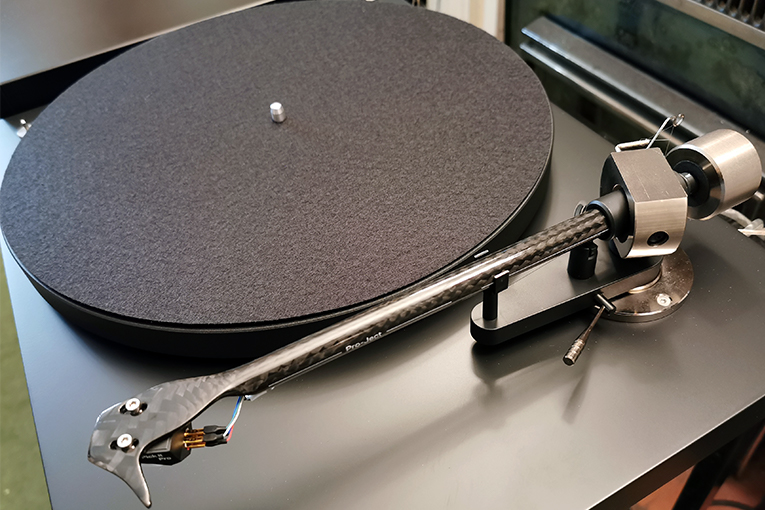
Pro-Ject kept the affordable turntable market alive through a couple of decades with its best-selling Debut. Even before the Vinyl Revival, the Debut was providing newcomers to the LP with a perfect introduction to record spinning, while there are less-expensive Pro-Ject models for those of a less aspirational mien. It has evolved into a range of models, including the arrival of last year’s Debut Carbon Evo. But that bargain has just been joined by a slightly costlier sibling, which is now the top model in the Debut family.
Pro-Ject’s Heinz Lichtenegger assures me this will be the ultimate incarnation of the Debut. He doesn’t want the top Debut to be too costly, so he’s put a ceiling on the Debut line with the brand-new Debut Pro, and those who want more performance can look to the ranges above it. As with all Debuts, it comes fitted with a tonearm that is not interchangeable, but it’s a gem, so don’t worry about limitations.
It’s also worth pointing out, and in keeping with the open-ended spirit of this system, that the Debut Pro can be accessorised with other mats or cables, clamps, or a change of cartridge for those who are so predisposed. What I am describing here is what you get straight out of the box, with that one proviso of the cartridge in the USA.
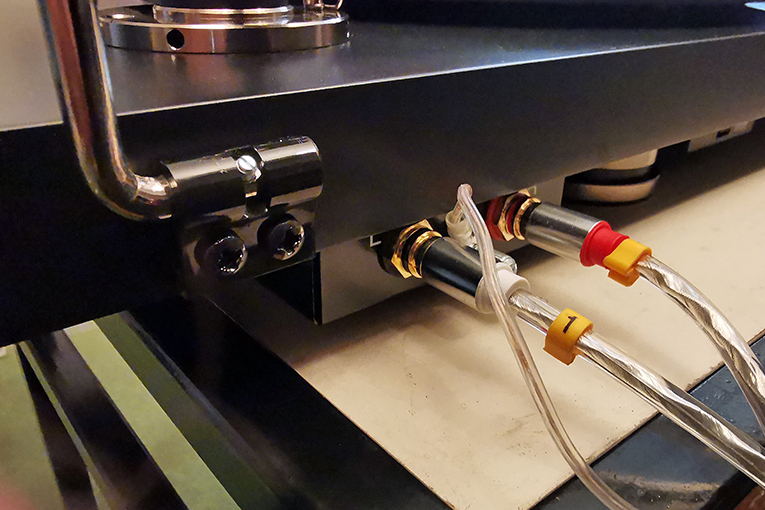
Like all Debuts, the Pro is a minimalist slab, finished in satin black with brushed-nickel trim. Everything else is fresh, starting with a new 8.6″ tonearm with an aluminum arm tube with a carbon-fibre wrap “for excellent rigidity and to reduce resonances.” There’s a new heavy-duty, nickel-plated, machined-aluminum bearing block, while the platter is die-cast aluminum with integrated TPE damping. It comes with an external wall wart for power, a felt mat, and height-adjustable feet with integrated resonance damping, along with handy electronic speed selection, an acrylic dust cover, and a decent pair of detachable phono cables, the company’s Connect it E.
What will limit my observations when we come to the end of this series is the cartridge, as I have no experience whatsoever with what is provided across the Pond. For the world outside of the United States, the Debut Pro comes fitted with a special version of Ortofon’s 2M moving-magnet cartridge. I’ve used at least three models from that range and keep a 2M Red as my budget reference cartridge, so I knew what to expect. What I cannot comment on is the Sumiko Rainier installed on US Debut Pros.
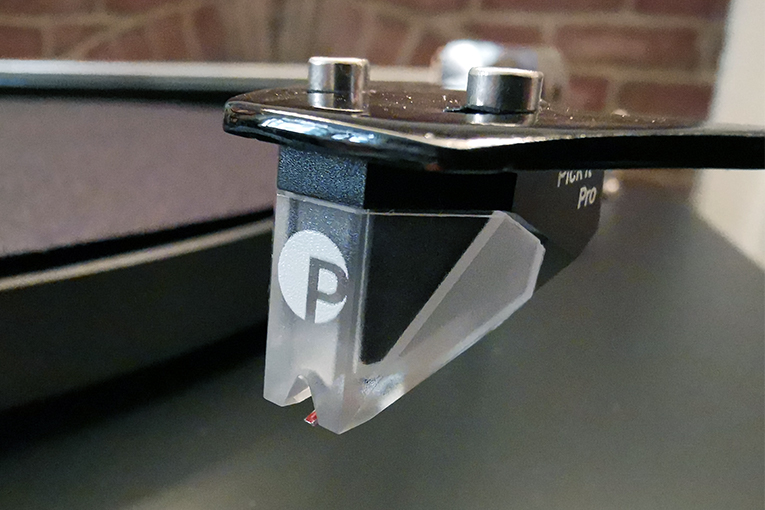
Here’s the best news, considering what I’ve heard with a cartridge I do know: the Debut Pro elevates the performance of an already-excellent deck in the areas of quietness, bass extension, image solidity, impact, and other sound categories. It is a thoroughbred for which even the superb Debut Carbon didn’t prepare me.
Now sit tight: the Debut Pro with Sumiko Rainier cartridge—itself worth circa-$150—is (drum roll . . .) $999. Yes, $999. Which means we have now spent $5544.
Next month: the speakers (at last).
. . . Ken Kessler
kenk@soundstagenetwork.com






















